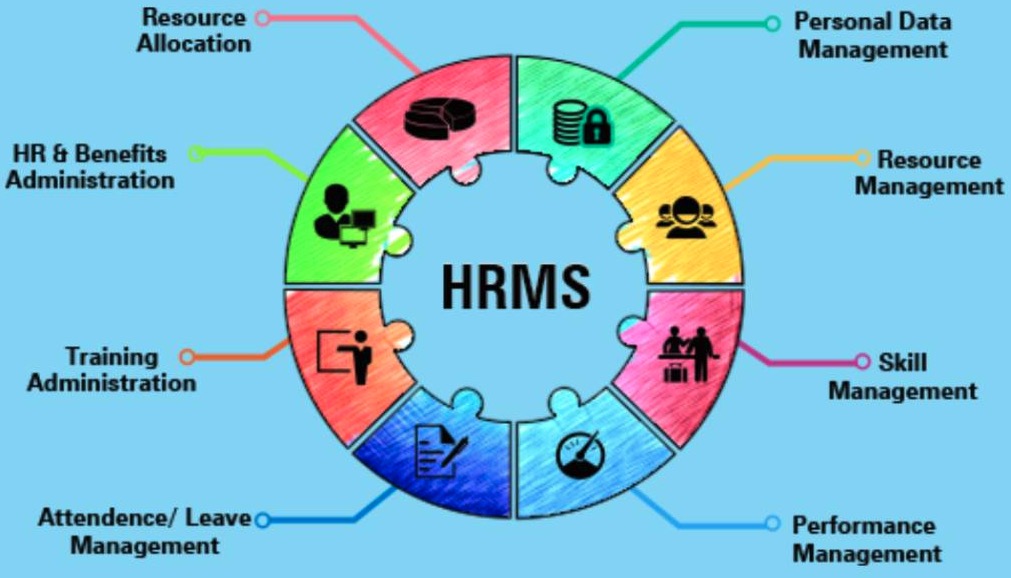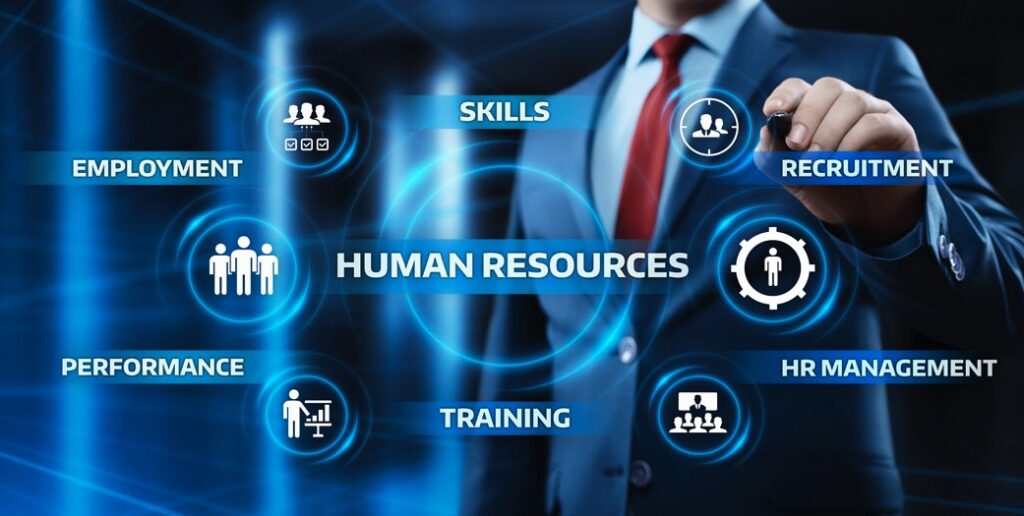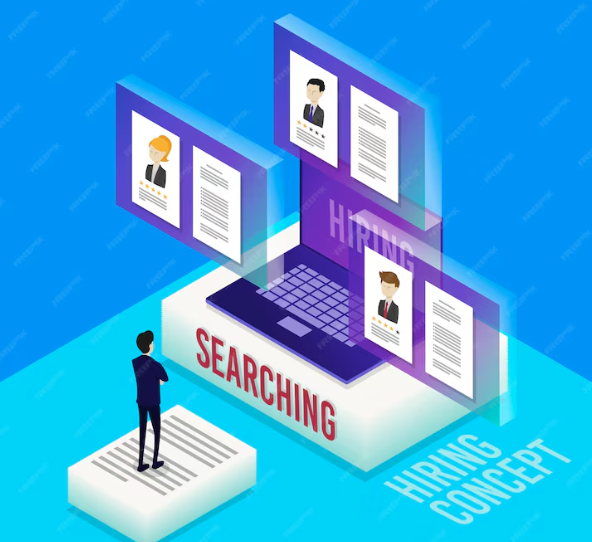Enterprise HRIS Software[1] – Enterprise Human Resource Information System (HRIS) software is transforming the way organizations manage their workforce. This powerful tool integrates various HR functions, streamlining processes, and enhancing efficiency. In this article, we’ll delve into the essential aspects of Enterprise HRIS software, exploring its features, benefits, implementation, and more.

What is Enterprise HRIS Software?
Definition and Overview
Enterprise HRIS software is a digital solution that manages HR activities and processes in large organizations. It serves as a centralized database for employee information, payroll, recruitment, training, and performance management. By integrating these functions, HRIS software simplifies HR operations, reduces manual work, and improves data accuracy.
Key Features
- Centralized Database: A single repository for all employee-related data, ensuring consistency and accessibility.
- Automation of HR Processes: Automates repetitive tasks such as payroll processing, leave management, and benefits administration.
- Reporting and Analytics: Provides insights through detailed reports and analytics, aiding in strategic decision-making.
Importance in Modern Businesses
Enterprise HRIS software is crucial in today’s fast-paced business environment. It helps organizations manage their workforce more effectively, enhances compliance with legal requirements, and improves overall employee satisfaction. By leveraging HRIS, companies can focus on strategic initiatives rather than administrative tasks.
Benefits of Enterprise HRIS Software

Enhanced Efficiency
- Streamlined Processes: Automates various HR functions, reducing the time and effort required for manual tasks.
- Improved Accuracy: Minimizes human errors in data entry and processing.
- Time Savings: Frees up HR professionals to focus on strategic activities.
Better Decision Making
- Data-Driven Insights: Provides valuable insights through real-time data and analytics.
- Trend Analysis: Helps in identifying trends and patterns in workforce data.
- Informed Strategies: Enables informed decision-making by offering detailed reports and analytics.
Employee Satisfaction
- Self-Service Portals: Allows employees to access and manage their information, reducing dependency on HR.
- Improved Communication: Enhances communication between HR and employees through centralized platforms.
- Career Development: Facilitates training and development programs, aiding in employee growth and satisfaction.
Key Components of Enterprise HRIS Software

Employee Information Management
- Central Repository: Stores comprehensive employee data, including personal details, job history, and performance records.
- Access Control: Ensures data security through role-based access controls.
- Data Integrity: Maintains data accuracy and consistency across the organization.
Payroll Management
- Automated Calculations: Handles salary computations, tax deductions, and benefits administration automatically.
- Compliance: Ensures adherence to legal and regulatory requirements.
- Pay Slips: Generates electronic pay slips for employees.
Recruitment and Onboarding
- Applicant Tracking: Manages the entire recruitment process from job posting to candidate selection.
- Onboarding: Streamlines the onboarding process, ensuring a smooth transition for new hires.
- Talent Acquisition: Helps in attracting and retaining top talent.
Implementing Enterprise HRIS Software
Planning and Preparation
- Needs Assessment: Conduct a thorough assessment of the organization’s HR needs.
- Budgeting: Allocate a budget for the HRIS implementation.
- Stakeholder Involvement: Involve key stakeholders in the planning process.
Selecting the Right HRIS
- Vendor Evaluation: Assess different HRIS vendors based on features, pricing, and support.
- Demo and Trials: Request demos and trial versions to evaluate the software.
- Customization: Ensure the HRIS can be customized to meet specific organizational needs.
Training and Deployment
- User Training: Provide comprehensive training to HR staff and employees.
- Phased Deployment: Implement the HRIS in phases to ensure a smooth transition.
- Support and Maintenance: Establish ongoing support and maintenance plans.
Challenges and Solutions in HRIS Implementation
Common Challenges
- Resistance to Change: Employees may resist adopting new systems.
- Data Migration: Transferring data from legacy systems can be complex.
- Cost Overruns: Implementation costs may exceed the initial budget.
Overcoming Resistance
- Change Management: Implement a robust change management strategy.
- Communication: Communicate the benefits of the new system to employees.
- Training Programs: Provide continuous training and support.
Ensuring Data Security
- Encryption: Use encryption to protect sensitive data.
- Access Controls: Implement strict access controls.
- Regular Audits: Conduct regular security audits.
Future Trends in Enterprise HRIS Software
Artificial Intelligence and Machine Learning
- Predictive Analytics: AI can predict employee trends and behavior.
- Chatbots: AI-powered chatbots can handle routine HR inquiries.
- Automation: Machine learning can automate complex HR tasks.
Mobile Accessibility
- Mobile Apps: HRIS systems are increasingly offering mobile applications.
- Remote Access: Employees can access HR services from anywhere.
- On-the-Go Management: Managers can handle HR tasks on the move.
Integration with Other Systems
- ERP Integration: Integrating HRIS with ERP systems for seamless data flow.
- Third-Party Applications: Connecting HRIS with other business applications.
- API Usage: Utilizing APIs for custom integrations.
Selecting the Best Enterprise HRIS Software
Key Considerations
- Scalability: Ensure the HRIS can scale with the organization’s growth.
- User-Friendly Interface: The software should be easy to use.
- Vendor Reputation: Choose a reputable vendor with good customer reviews.
Top HRIS Vendors
- SAP SuccessFactors: Known for its robust features and integration capabilities.
- Workday: Offers a comprehensive suite of HR solutions.
- Oracle HCM: Provides extensive HR functionalities and analytics.
Customization and Flexibility
- Tailored Solutions: Look for HRIS that can be tailored to specific needs.
- Modular Approach: Opt for a modular system that allows adding features as needed.
- User Feedback: Incorporate user feedback in customization.
Best Practices for Using Enterprise HRIS Software
Regular Updates and Maintenance
- Software Updates: Keep the HRIS software updated to leverage new features.
- Regular Backups: Ensure regular data backups to prevent data loss.
- Performance Monitoring: Monitor system performance and address issues promptly.
Employee Engagement
- Feedback Mechanisms: Implement mechanisms for employees to provide feedback.
- User Training: Regularly train employees on using the HRIS.
- Support Services: Provide robust support services for employees.
Compliance and Legal Considerations
- Regulatory Compliance: Ensure the HRIS complies with local and international regulations.
- Data Protection: Implement strong data protection measures.
- Audit Trails: Maintain audit trails for compliance and transparency.
The Role of HR Professionals in HRIS Management
Strategic Planning
- Aligning HRIS with Business Goals: Ensure the HRIS supports the organization’s strategic objectives.
- Continuous Improvement: Regularly assess and improve HRIS functionalities.
- HR Analytics: Utilize analytics to drive HR strategies.
Employee Training and Development
- Skill Development: Use HRIS to identify and address skill gaps.
- Career Pathing: Facilitate career development through targeted programs.
- Performance Management: Enhance performance management processes.
Enhancing Employee Experience
- Personalization: Personalize HR services to meet employee needs.
- Accessibility: Ensure easy access to HR services through the HRIS.
- Feedback Integration: Integrate employee feedback into HR practices.
Measuring the Success of HRIS Implementation
Key Performance Indicators (KPIs)
- User Adoption: Measure the rate of user adoption and engagement.
- Process Efficiency: Assess improvements in HR process efficiency.
- Cost Savings: Evaluate cost savings achieved through automation.
Employee Feedback
- Satisfaction Surveys: Conduct surveys to gauge employee satisfaction.
- Usage Statistics: Analyze usage statistics to understand engagement levels.
- Continuous Improvement: Use feedback to continuously improve the HRIS.
Business Impact
- Strategic Alignment: Measure how well the HRIS aligns with business strategies.
- Productivity Gains: Assess improvements in overall organizational productivity.
- Return on Investment (ROI): Calculate the ROI of the HRIS implementation.
Conclusion
Enterprise HRIS software is a vital tool for modern organizations, offering numerous benefits from enhanced efficiency to better decision-making. By understanding its features, implementing it effectively, and continuously improving its usage, businesses can significantly improve their HR processes and overall workforce management. As technology evolves, staying updated with the latest trends and best practices in HRIS will ensure that organizations remain competitive and able to attract, retain, and develop top talent.
